Hue, the former imperial capital of Vietnam, is a captivating city steeped in history, culture, and natural beauty. Nestled along the banks of the Perfume River in central Vietnam, Hue once served as the political, cultural, and religious heart of the Nguyen Dynasty—the last royal dynasty of Vietnam. Today, the city remains a treasure trove of heritage, offering visitors a unique glimpse into Vietnam's imperial past.
Hue is best known for its UNESCO World Heritage-listed Complex of Monuments, which includes the sprawling Imperial City (Dai Noi), royal tombs, ancient pagodas, and majestic temples. Beyond the historic sites, the city is surrounded by lush countryside dotted with traditional craft villages, serene rivers, and peaceful rice paddies. Whether you're wandering through centuries-old palaces, savoring local delicacies, or taking a dragon boat ride on the Perfume River, Hue offers a tranquil yet enriching experience. In this travel guide, we’ll explore the top attractions in Hue—from iconic landmarks and historical treasures to cultural experiences and hidden gems—ensuring your journey is both memorable and meaningful.
1. The Perfume River
The Perfume River (Sông Hương), affectionately known as the poetic soul of Hue, is one of the city's most iconic landmarks and top attractions. Stretching approximately 80 kilometers from its origins in the Ta Trach and Huu Trach tributaries deep in the Truong Son Mountains, the river winds its way through lush forests rich in aromatic plants, herbs, and wildflowers. These natural scents are said to have once infused the water with a delicate fragrance—hence the name "Perfume River."
As it meanders through Hue city, the river becomes more than just a body of water—it serves as a historical and cultural thread, linking many of Hue’s most treasured attractions. From ancient times to the present, the Perfume River has inspired poets, painters, and musicians with its graceful, tranquil beauty and spiritual significance.
One of the best things to do in Hue is to take a dragon boat ride along the Perfume River. This leisurely cruise offers panoramic views of Hue’s peaceful cityscape and gives visitors access to several must-see sites, including: The Imperial City, Thien Mu Pagoda, the majestic tombs of Nguyen emperors, such as Tu Duc and Minh Mang, nestled along its scenic shores.
Whether at dawn when the morning mist floats above the water, or during sunset when the river glows amber under the fading sun, the Perfume River is a must-visit attraction in Hue that encapsulates the city’s poetic charm and imperial legacy.
- Best time to visit: February to April, when the weather is mild and the natural scenery is at its most vibrant.
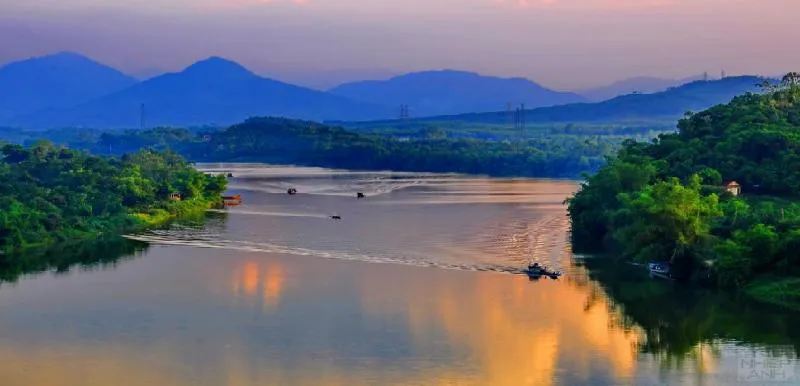
2. Dong Ba Market
Located right in the heart of Hue, Dong Ba Market is not just the oldest and largest traditional market in the city—it is also one of the most vibrant attractions in Hue Vietnam. Established in the early 19th century during the reign of Emperor Gia Long and rebuilt in the 1880s under Emperor Dong Khanh, the market has over 100 years of history and continues to serve as a bustling hub of local life.
Spanning several floors and dozens of stalls, Dong Ba Market offers a fascinating glimpse into daily Vietnamese culture. Here, visitors can find an incredible variety of goods, ranging from fresh produce and local herbs, seafood, meats, and homemade fish sauce to handicrafts, souvenirs, clothing, electronics, and household items.
But what truly makes Dong Ba Market a must-visit is its reputation as a gastronomic paradise. The market is one of the best places to sample authentic Hue street food—from savory dishes to sweet treats—served by generations of local vendors. Be sure to try Bun Bo Hue (spicy beef noodle soup), Banh beo (steamed rice cakes with shrimp), Nem lui (grilled lemongrass pork skewers) and Hue-style sweet soups.
- Address: No. 2 Tran Hung Dao Street, Phu Hoa Ward, Hue
- Opening hours: Daily from 5:00 AM to 10:00 PM

3. Truong Tien Bridge
Truong Tien Bridge, also known as Trang Tien Bridge, is one of the most recognizable landmarks in Hue. Spanning the Perfume River near the Imperial Citadel, this graceful structure is not only a vital transportation link but also a favorite photo spot for visitors and locals alike.
Constructed in 1897 during the French colonial period, Truong Tien Bridge was one of the first modern bridges in Indochina, built using iron and advanced Western engineering techniques. The bridge was designed and constructed by the renowned Eiffel Company, the same firm responsible for the Eiffel Tower in Paris, which gives the bridge both historical significance and architectural prestige.
The bridge measures 402.6 meters in length and features six elegant steel arches. Originally named Thanh Thai Bridge, after the 10th emperor of the Nguyen Dynasty who initiated its construction, the bridge was later renamed multiple times—Clémenceau, Nguyen Hoang, among others—reflecting various historical periods.
Locals, however, have long called it Truong Tien or Trang Tien, referring to the mint (tiền) factory that once stood near its southern end. Today, the bridge is particularly stunning at night when illuminated by colorful LED lights, and during the Hue Festival, it becomes a central point for art displays and performances.
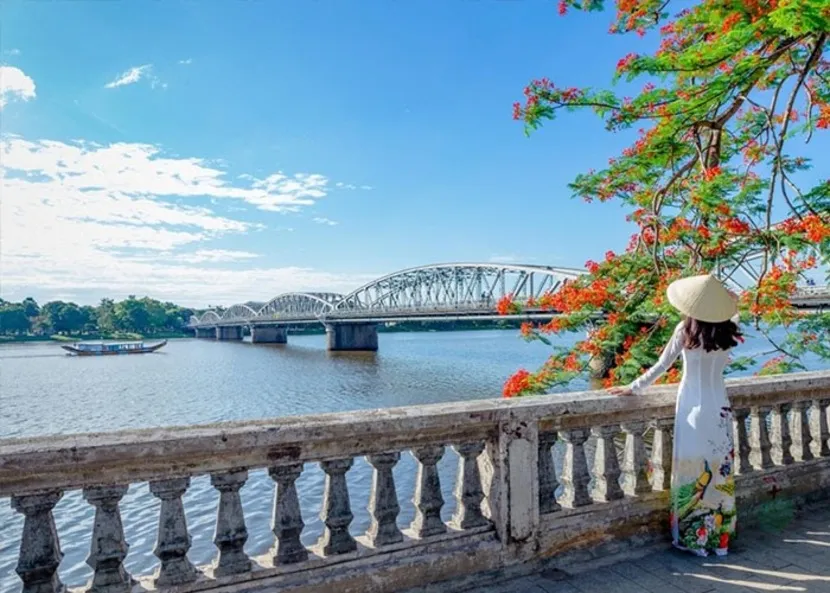
4. Hue Imperial City
One of the most iconic and historically significant attractions in Hue, the Hue Imperial City sits majestically on the northern bank of the Perfume River. It was the former seat of power for the Nguyen Dynasty, Vietnam’s last royal dynasty, which ruled from 1802 to 1945. The Imperial City forms the core of the vast Hue Monuments Complex, a UNESCO World Heritage Site since 1993.
Construction of the citadel began in 1804 under Emperor Gia Long and continued through the reigns of several emperors, blending Vietnamese architectural principles with French military design, inspired by the model of Vauban-style fortresses. The complex once covered more than 500 hectares and was protected by massive brick walls and a moat system.
The Imperial City includes three concentric sections:
- The Citadel (Kinh Thanh) – the outermost defensive wall
- The Imperial City (Hoang Thanh) – the administrative and ceremonial heart
- The Forbidden Purple City (Tu Cam Thanh) – the private residence of the royal family
Inside, visitors can explore ornate palaces, royal temples, ceremonial halls, the iconic Noon Gate, and other beautifully restored structures that reflect the grandeur of Vietnam's feudal past. Despite damages sustained during the wars, the citadel still preserves much of its feudal architecture, royal symbolism, and cultural essence. Restoration efforts have been ongoing to bring back its former glory, making it one of the best places to visit in Hue Vietnam for history lovers and cultural explorers.
- Address: 23/8 Street, Thuan Hoa Ward, Hue
- Opening hours: Summer: 6:30 AM – 5:30 PM | Winter: 7:00 AM – 5:00 PM
5. Royal Mausoleums of the Nguyen Kings
Unlike typical mausoleums that are constructed solely as resting places after a monarch's death, the mausoleums of the Nguyen Dynasty kings are uniquely exceptional. These grand structures are not only masterpieces of traditional Vietnamese architecture and strictly follow the principles of Feng Shui, but they also served as living spaces for the emperors during their lifetimes. Each mausoleum reflects the personality, philosophy, and aesthetic preferences of its royal owner, offering deep insight into the character and reign of the king it was built for. Among 7 mausoleums, these are the 4 most visited.
- Mausoleum of King Gia Long – Thien Tho Lang
Built between 1814 and 1820, the Mausoleum of King Gia Long—the founding emperor of the Nguyen Dynasty—is nestled in a remote area surrounded by mountains and pine forests. This mausoleum features a serene and majestic simplicity. It is also the resting place of his beloved queen, Empress Thua Thien, symbolizing the deep affection and loyalty between the royal couple. The layout of Thien Tho Lang embodies harmony between architecture and natural landscape, offering visitors a peaceful retreat steeped in historical significance.
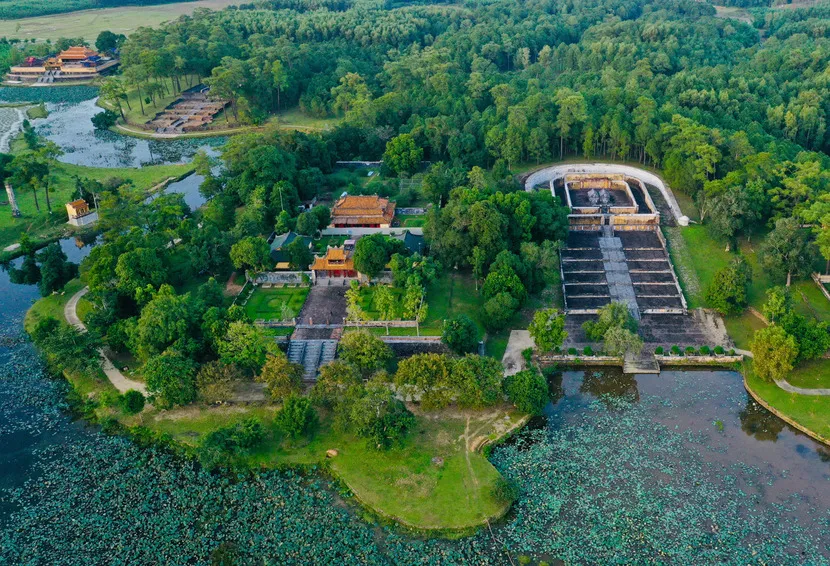
- Mausoleum of King Minh Mang – Hieu Lang
Regarded as one of the most architecturally perfect royal tombs in Hue, the Mausoleum of King Minh Mang was constructed from 1834 to 1843, nearly 14 years after his accession to the throne. Located at Mount Cam Khe, the tomb is laid out symmetrically along a central axis, representing balance, order, and imperial power. The complex features temples, courtyards, lakes, pavilions, and bridges that are seamlessly integrated into the surrounding hills and pine woods. King Minh Mang is remembered for his contributions to expanding the country and strengthening its administration, and Hieu Lang reflects both his visionary leadership and philosophical depth.
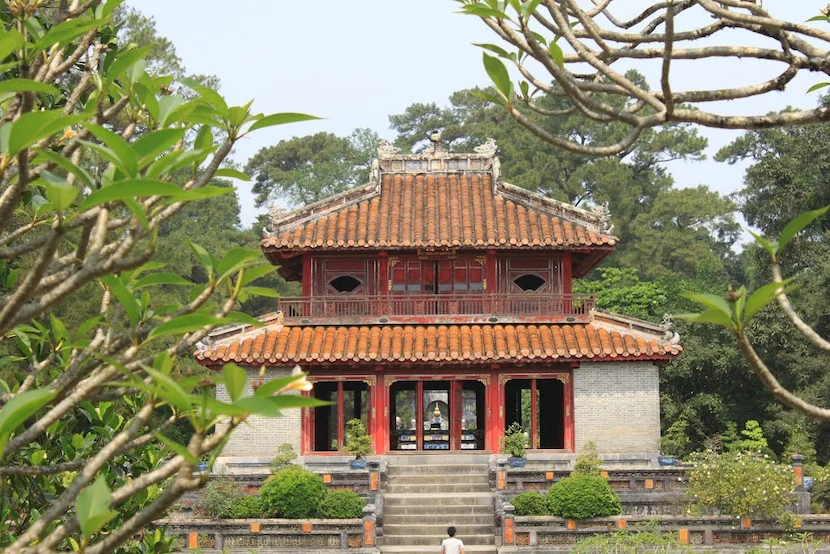
Mausoleum of King Tu Duc – Khiem Lang
Built between 1864 and 1873, the Mausoleum of King Tu Duc—also called Khiem Lang—is often hailed as the most poetic and romantic of the Nguyen tombs. Known as a scholar, poet, and philosopher, King Tu Duc designed his mausoleum as a peaceful retreat where he spent time meditating and writing even while alive. The complex features a serene lotus lake, small islets, elegant pavilions, and winding stone paths, all echoing the king’s delicate and introspective soul. It is one of the most atmospheric and spiritually evocative places to visit in Hue.
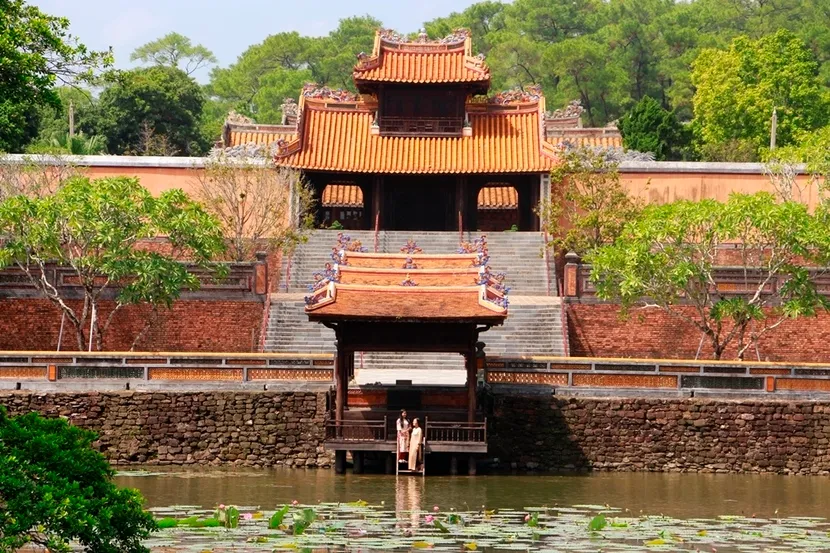
Mausoleum of King Khai Dinh
Completed in 1931, the Mausoleum of King Khai Dinh stands out for its unique fusion of Vietnamese tradition and European influence. Unlike other tombs, it is constructed primarily of concrete and features gothic, Baroque, and neoclassical design elements, blended with traditional Vietnamese motifs. Located on Chau Chu Mountain, the tomb’s interior is lavishly decorated with glass, porcelain mosaics, and intricate imperial symbolism, culminating in a breathtaking main hall with the king’s bronze statue and ornate sarcophagus. Though smaller in scale, it is perhaps the most artistically extravagant of all the Nguyen tombs.

6. Villages in Hue
6.1. Hue ancient villages
Blessed with poetic landscapes of rivers, lakes, verdant vegetation, and a long coastline dotted with serene lagoons, Hue has been an ideal place to live since ancient times. Scattered across its countryside are beautiful, time-honored villages that have preserved their history, architecture, customs, and peaceful way of life for generations.
These ancient villages offer a window into the authentic rural culture of Central Vietnam. The best way to explore these tranquil communities is on foot or by bicycle, allowing you to soak in the quiet atmosphere and scenic beauty—often accompanied by the gentle rustle of bamboo and the distant echo of temple bells.
Some of the most notable ancient villages to visit in Hue include:
- Thuy Bieu Village – Famous for its lush pomelo gardens, traditional wooden houses, and peaceful setting along the Perfume River.
- La Chu Village – Known for its agricultural heritage, fresh produce, and welcoming rural ambiance.
- Phuoc Tich Village – A 500-year-old village celebrated for its well-preserved ancient houses, traditional pottery, and sacred temples, recognized as a national cultural heritage site.
These villages are perfect for cultural tours, photography, and connecting with the soul of Hue through its most authentic rural experiences.
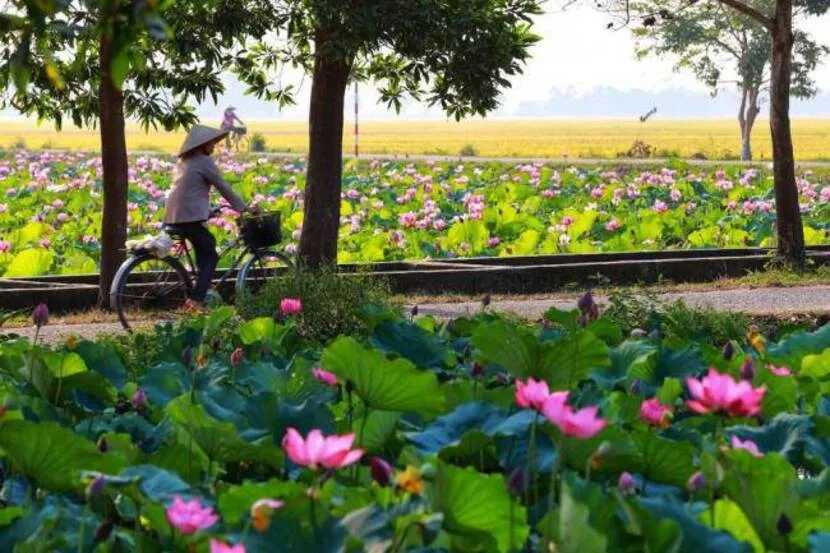
6.2. Handicraft villages
Since the early days of Hue as Vietnam’s imperial capital, the city attracted master craftsmen from across the country to contribute to the construction of the Imperial Citadel and other royal monuments. This royal patronage led to the formation of specialized craft villages, many of which still thrive today, preserving centuries-old techniques and traditions.
Visiting these handicraft villages in Hue offers a unique cultural experience where you can witness artisans at work, learn about traditional materials and methods, and even try your hand at making some of the crafts yourself.
- Bao La Village – Renowned for its bamboo and rattan weaving, producing everything from baskets to furniture
- Thuy Xuan Village – A colorful and fragrant village famous for making traditional incense sticks
- Thanh Tien Village – Specializes in paper flowers, originally created as altar offerings
- Phu Cam Village – The birthplace of Hue’s iconic conical hats, known for their durability and poetic charm
- Sinh Village – Famous for its folk woodblock paintings
- Tien Non Village – Dedicated to the craft of Vietnamese lacquerware, producing decorative and functional art pieces
These craft villages offer a rare opportunity to explore the artistic soul of Hue, where cultural pride is preserved through the hands of its people.
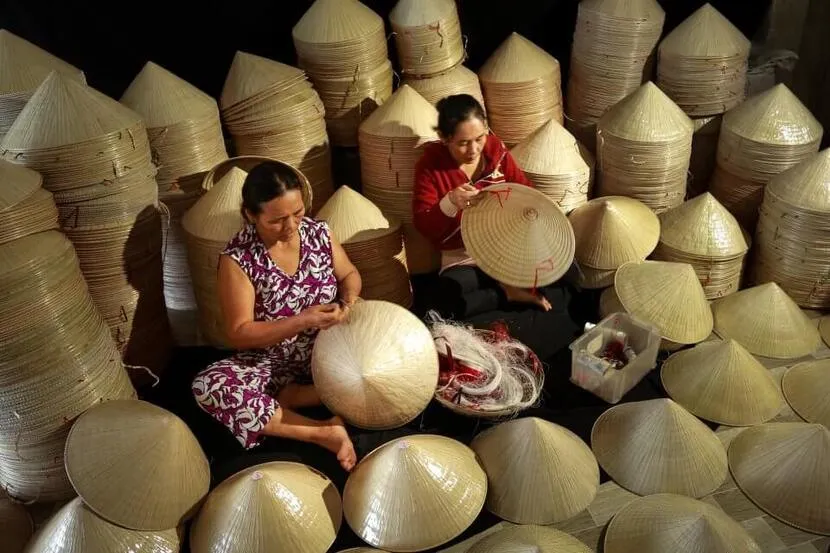
7. Hue pagodas and temples
A visit to Hue would be incomplete without exploring its serene pagodas and ancient temples, many of which are nestled amidst lush greenery and scenic riverbanks. These sacred sites not only provide peaceful retreats from the city's bustle, but also offer profound insight into the spiritual and cultural identity of Vietnam’s former imperial capital.
With their elegant architecture, tranquil settings, and deep historical roots, the pagodas in Hue reflect centuries of Buddhist influence and royal patronage. Many were built or restored during the Nguyen Dynasty and served as important centers for worship, education, and meditation.
Visiting these temples is one of the most meaningful things to do in Hue Vietnam, especially for those seeking cultural depth and spiritual connection.
- Thien Mu Pagoda
Thien Mu Pagoda, also known locally as Linh Mu Pagoda, is perched gracefully on Ha Khe Hill, overlooking the Perfume River. This centuries-old temple is set amidst a serene and picturesque landscape that perfectly embodies the poetic beauty of the region.
Founded in 1601 by Lord Nguyen Hoang, Thien Mu Pagoda is the oldest pagoda in Hue and a spiritual emblem of the city. The most recognizable feature of the complex is the Phuoc Duyen Tower, a striking seven-story octagonal structure that rises majestically above the treetops. It has become a symbol of Hue, often featured in literature, art, and postcards.
If you take a boat trip along the Perfume River, you’ll catch a view of the tower from a distance. The pagoda grounds also include ancient bells, statues, bonsai gardens, and a tranquil courtyard that invites peaceful contemplation.
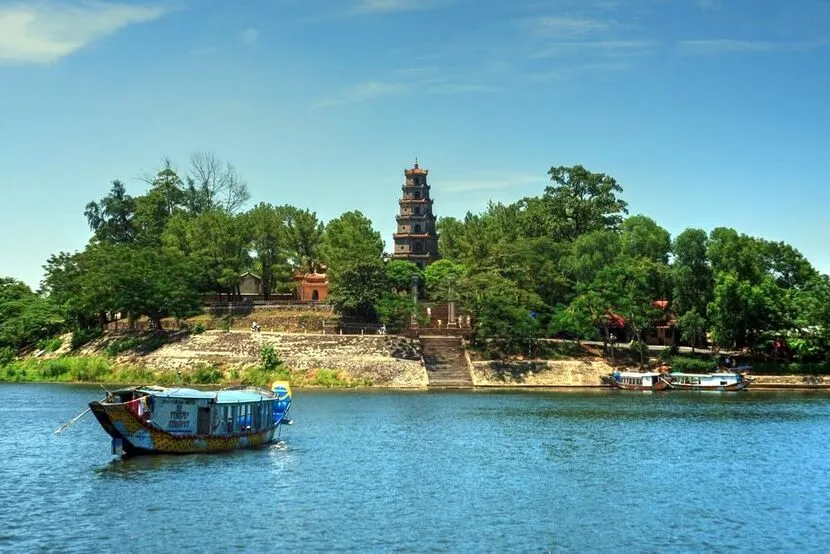
- Tu Hieu Pagoda
Tu Hieu Pagoda, nestled in the quiet pine forest, is one of the most significant ancient pagodas in Hue. Founded in 1843, the pagoda has long been cherished not only for its serene setting but also for its heartfelt history.
Tu Hieu is best known for its close ties to the imperial court and its role as a resting place for eunuchs of the Nguyen Dynasty, who funded the construction and restoration of the pagoda out of gratitude. The story of its founding monk, Thich Nhat Dinh, is equally moving—he is remembered for his filial piety, having left his monastic life temporarily to care for his ailing mother.
Surrounded by lotus ponds, pine trees, and tranquil gardens, the pagoda offers a sense of calm and reflection to all who visit. It remains an active monastery and a destination for Buddhist practitioners, as well as one of the best hidden gems in Hue for those seeking contemplation.
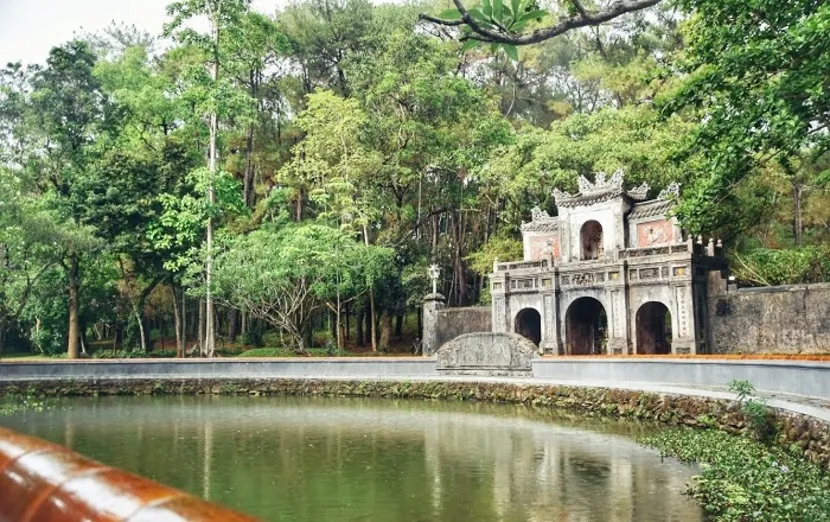
- Hon Chen Temple
Hon Chen Temple is definitely a famous tourist attraction in Hue. The temple is surrounded by scenic landscapes as unique as a painting. This place holds many anecdotes and many mysterious stories.
Hon Chen Temple is one of the most unique attractions in Hue, captivating visitors with its stunning riverside setting and air of mystique. Overlooking the Perfume River from Ngoc Tran mountain, the temple is surrounded by picturesque scenery that resembles a natural painting. Hon Chen is dedicated to Yen Lac Holy Mother (Thiên Y A Na), a deity worshipped in both Cham and Vietnamese folk religions, making the site a fascinating blend of spiritual traditions.
Rich in legend and folklore, Hon Chen Temple is said to be a place where miraculous events and spiritual rituals have occurred for centuries. It is still an active site of worship, especially during the Hon Chen Festival, held twice a year, when devotees gather in traditional costumes to celebrate with processions, dances, and offerings on the river.
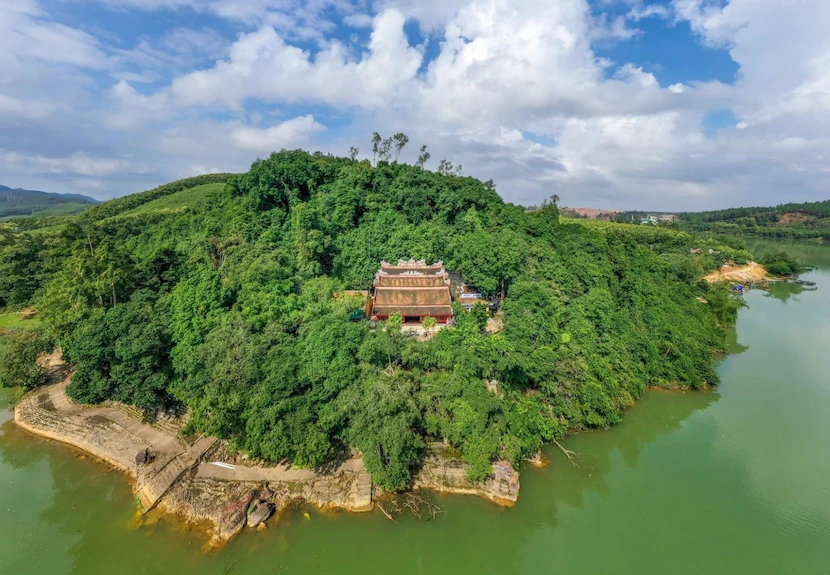
Zen Truc Lam Monastery
Truc Lam Zen Buddhism is a distinctive Vietnamese school of meditation, rooted in national tradition and spiritual philosophy. True to the essence of Zen practice, its monasteries are often situated in remote, serene locations—far from urban noise and distractions—to promote inner peace and reflection. One of the most remarkable sites of this tradition is the Truc Lam Bach Ma Zen Monastery, nestled within Bach Ma National Park, about 30 km south of Hue. Reaching the monastery requires a challenging journey through winding mountain roads, but for those who make the effort, the reward is immense.
The monastery offers breathtaking natural scenery and an atmosphere of profound tranquility. Its architecture blends harmoniously with the landscape, and the panoramic views from the mountain summit are truly unforgettable.
8. Bach Ma National Park
Located just over an hour’s drive from Hue, Bach Ma National Park is a hidden gem for nature lovers and adventure seekers. This biodiverse haven boasts lush rainforests, cool mountain air, and stunning panoramic views from the summit of Bach Ma Mountain. Visitors can explore scenic hiking trails, discover cascading waterfalls like Do Quyen and Ngu Ho, and encounter a wide range of plant and animal species—some of which are rare or endangered.
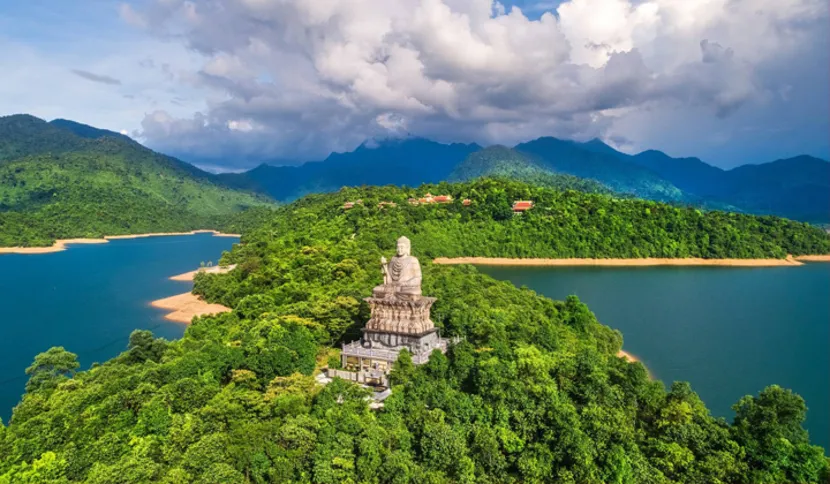
9. Beaches in Hue
While often overshadowed by more famous coastal destinations in Vietnam, the beaches in Hue offer an untouched, authentic charm. These serene shores are perfect for a relaxing getaway, away from the bustle of major tourist hubs.
- Thuan An Beach
Located just 15 kilometers from the city center, Thuan An Beach is considered the most popular beach among locals and one of the best-kept secrets for visitors. With its fine white sand, clear turquoise waters, and gently sloping shorelines, it’s an ideal spot for swimming and sunbathing.
Despite its beauty, the beach remains relatively uncrowded, partly because of the limited number of large hotels and resorts in the area. This gives Thuan An a peaceful atmosphere, making it perfect for those seeking a more authentic, off-the-beaten-path experience in Hue.
- Lang Co Bay
Lang Co Bay is a stunning natural paradise that was named one of the world’s most beautiful bays by the World Bays Club in 2009. Surrounded by majestic mountains, lush forests, crystal-clear sea, and tranquil lagoons, Lang Co is where the elements of land, water, and sky meet in harmony. This crescent-shaped bay is known for its clean, calm waters and is a great spot for beach activities, boat trips, or simply relaxing with a view. Lang Co is also conveniently close to Hai Van Pass, making it an excellent stop on the scenic route between Hue and Da Nang.
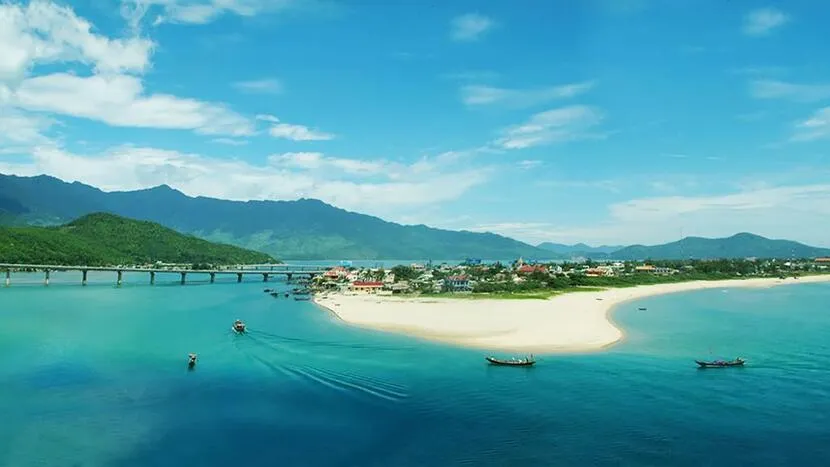
10. Hue's lagoons
Beyond its historic monuments and royal tombs, Hue also captivates visitors with its peaceful coastal wetlands and scenic lagoons.
- Chuon Lagoon
Chuon Lagoon is part of the Tam Giang–Cau Hai lagoon system, the largest of its kind in Southeast Asia. This lesser-known spot is a haven of calm, where time seems to slow down.
At sunrise and sunset, the lagoon becomes a mesmerizing canvas of color. The area is also famous for its floating seafood restaurants, built on stilts right over the water, where you can enjoy freshly caught fish, shrimp, and crab prepared the local way. Visitors can take a small wooden boat tour with local fishermen to explore the tranquil waterways, experience traditional net fishing, and immerse themselves in the peaceful rhythms of rural life.
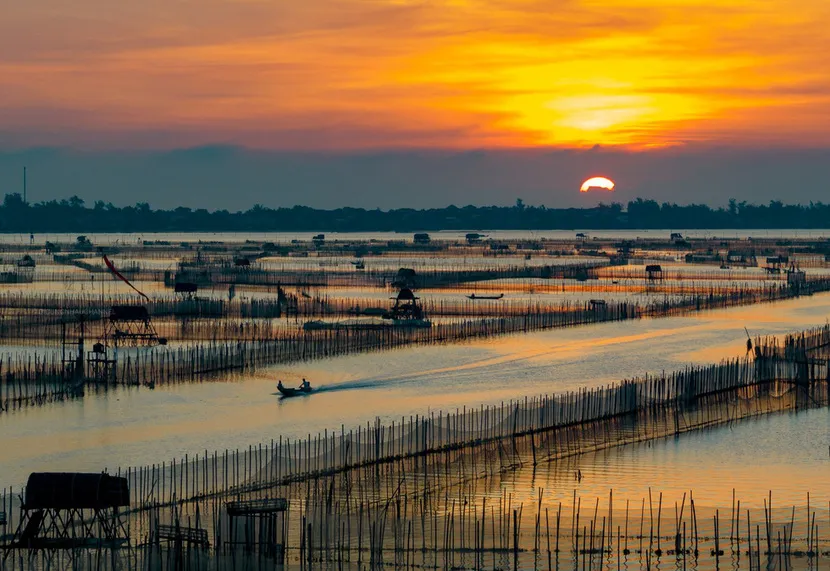
- Lap An Lagoon
Located at the foot of the Bach Ma Mountains, Lap An Lagoon is a scenic brackish water lagoon. Enclosed by majestic mountains and bordering Lang Co Bay, this lagoon is a stunning blend of mountain reflection and coastal charm.
What makes Lap An especially magical is the appearance of a natural sand path that emerges at low tide, allowing visitors to walk right into the heart of the lagoon—perfect for photography and quiet reflection. The area is also dotted with oyster farms, and the local restaurants serve up famous grilled oysters with scallion oil, a regional delicacy.
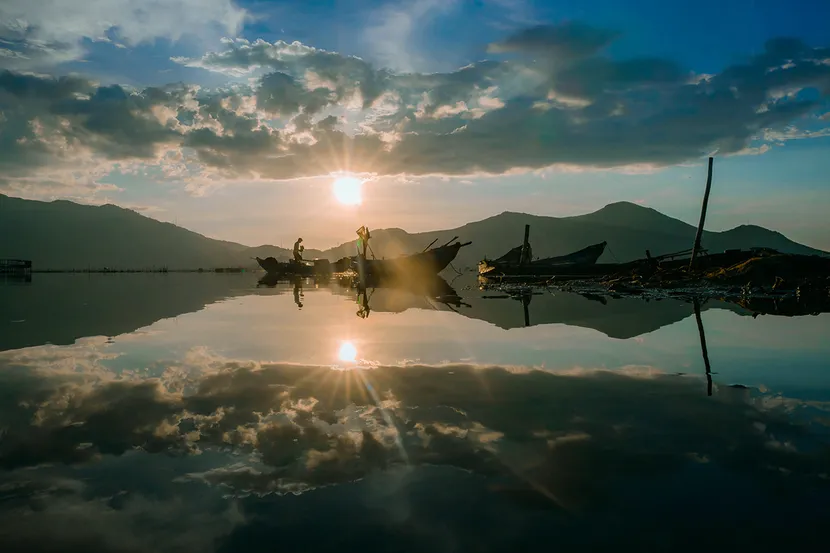
We hope this guide to the top attractions in Hue has inspired you to explore the rich history, culture, and natural charm of this imperial city. Whether you're drawn to ancient monuments, peaceful landscapes, or hidden local gems, Hue offers experiences that will stay with you long after your journey ends.
If you have any questions or thoughts to share, feel free to leave a comment below. Don't forget to contact IZITOUR, a trusted local travel agency with over 7 years of experience in crafting tailor-made journeys, to make your trip truly unforgettable.
See more:
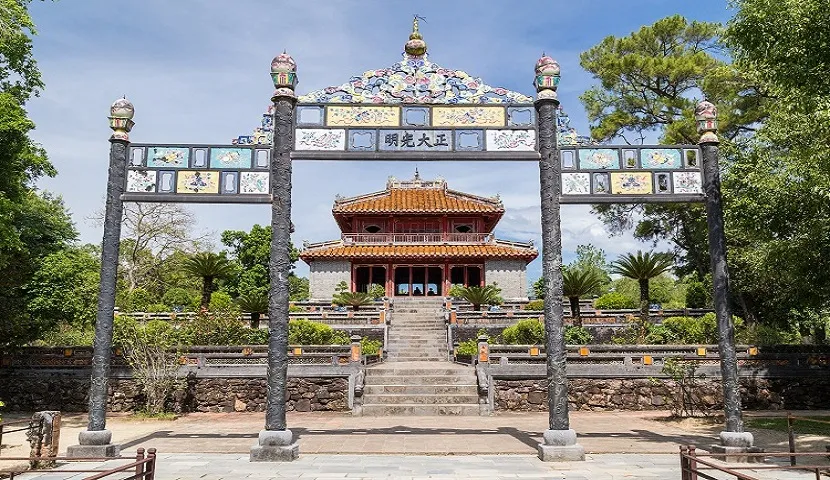






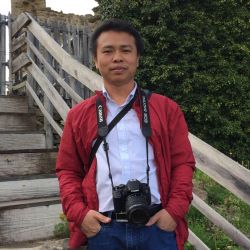
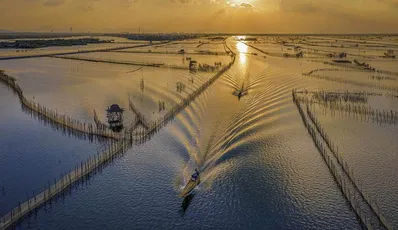
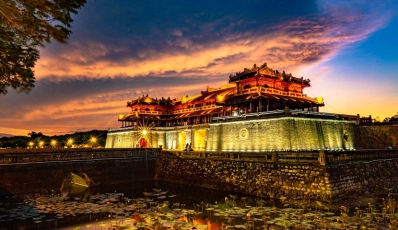
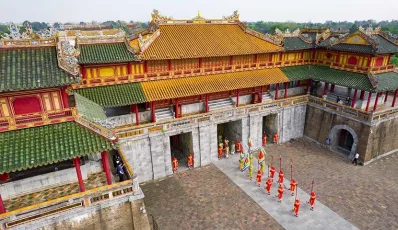
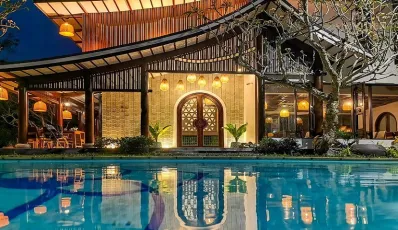
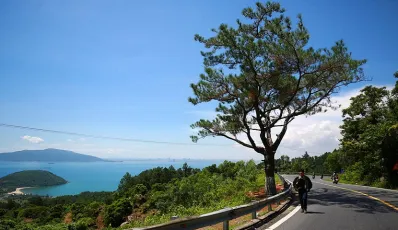
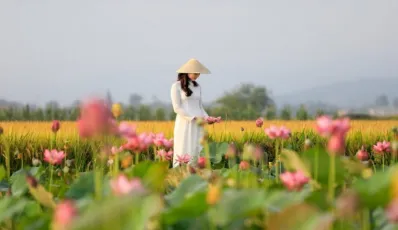
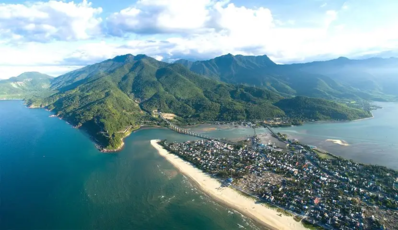
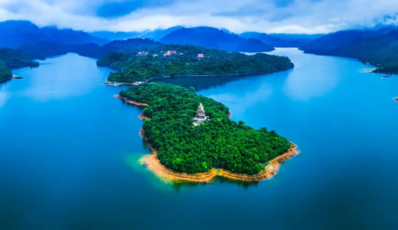
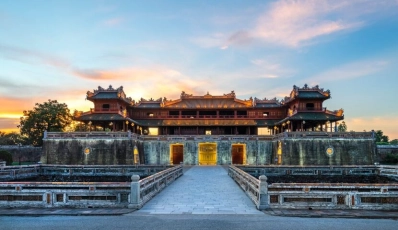
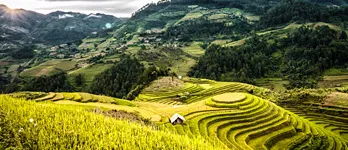
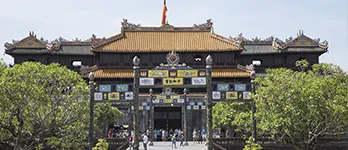
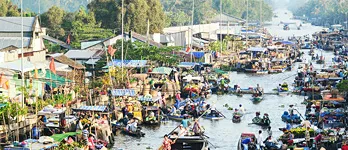

 TRAVELERS' CHOICE 2025
TRAVELERS' CHOICE 2025 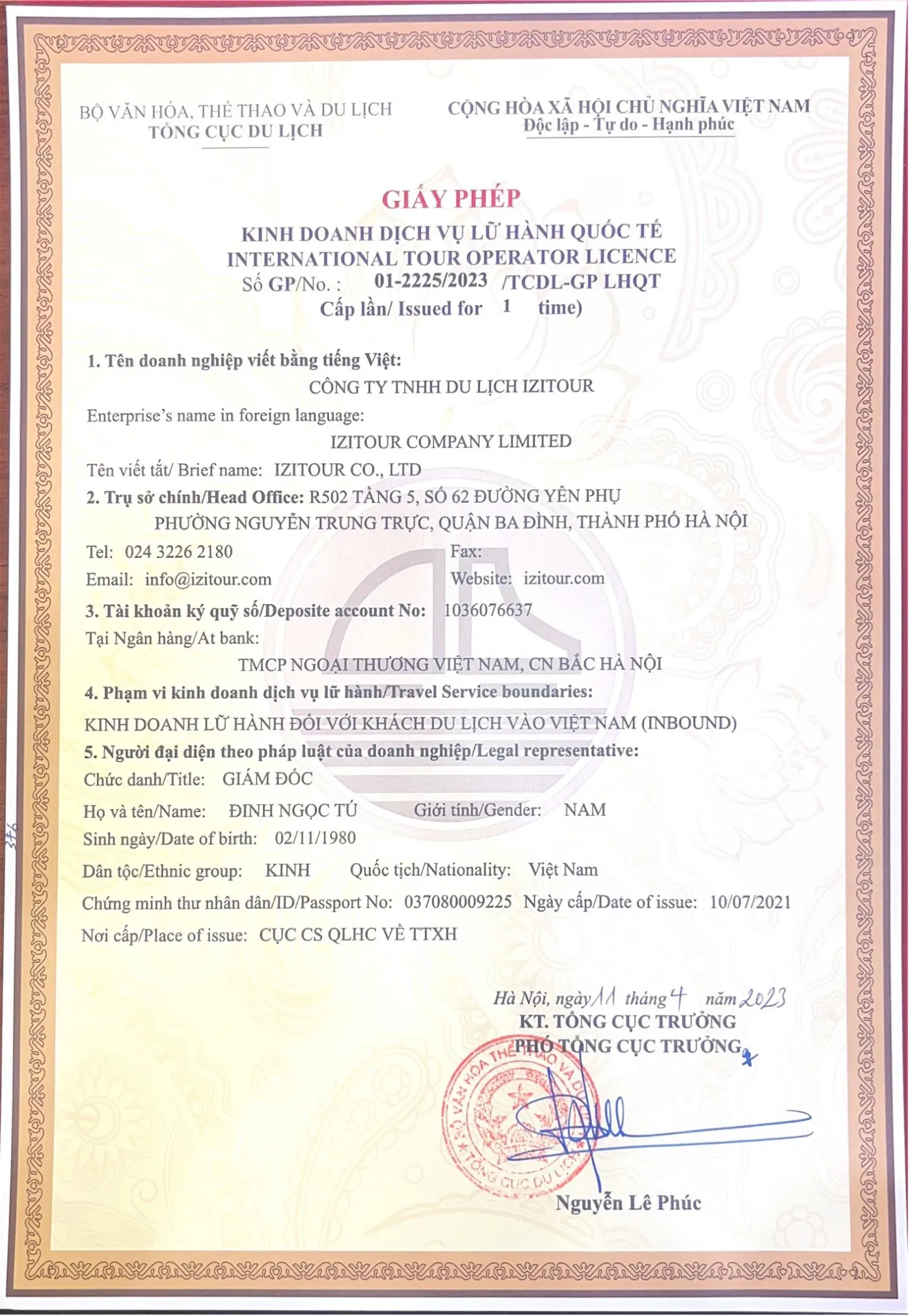



04 Comments
Eritrea
Hello, I would like to visit your country. Please provide us visa information. Thank you
Vietnam
Hi Timmy, to check visa requirements for your nationality, please click this link: Vietnam Visa.
Rwanda
Hue city is really impressive, totally different from other cities in Vietnam. This reminds me of my trip to Vietnam really much.
Vietnam
Write Reply